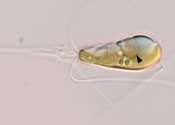Researchers discover how nature repurposes ammonium transporters as receptors
A team led by Freiburg biochemist Prof. Dr. Susana Andrade has characterized a new membrane protein that allows microorganisms to repurpose ammonium transporters (Amts) as receptors.









